With their long, sweeping branches and pale pink blossoms in the springtime, weeping cherry trees add a bit of magic to any garden. But to showcase their true beauty, you'll want to choose the right plants to grow at their base. If you have one of these lovely trees in your garden, you've probably wondered what to pair with it. So, with this question in mind, we've created a list of the best plants and shrubs to grow at the base of weeping cherry trees.
Since weeping cherry trees have blossoms, plants that attract pollinators make the perfect companions.
Additionally, they prefer well-drained, slightly acidic soil, so you'll need to grow plants around their base that also thrive in these conditions.
Finally, you'll want to select plants that can survive in full to partial shade. Plants that meet these criteria include:
- Lavender
- Comfrey
- Chives
- Nasturtiums
- Marigolds
- Lungwort
- Japanese forest grass
- Periwinkle
- Creeping raspberry
In the rest of this article, we'll discuss each of these plants in more detail, including care tips and the reasons they're compatible with weeping cherry trees. By the end, you should have a good idea of which plants might be the ideal choice for your garden. So, without further ado, let's get started!
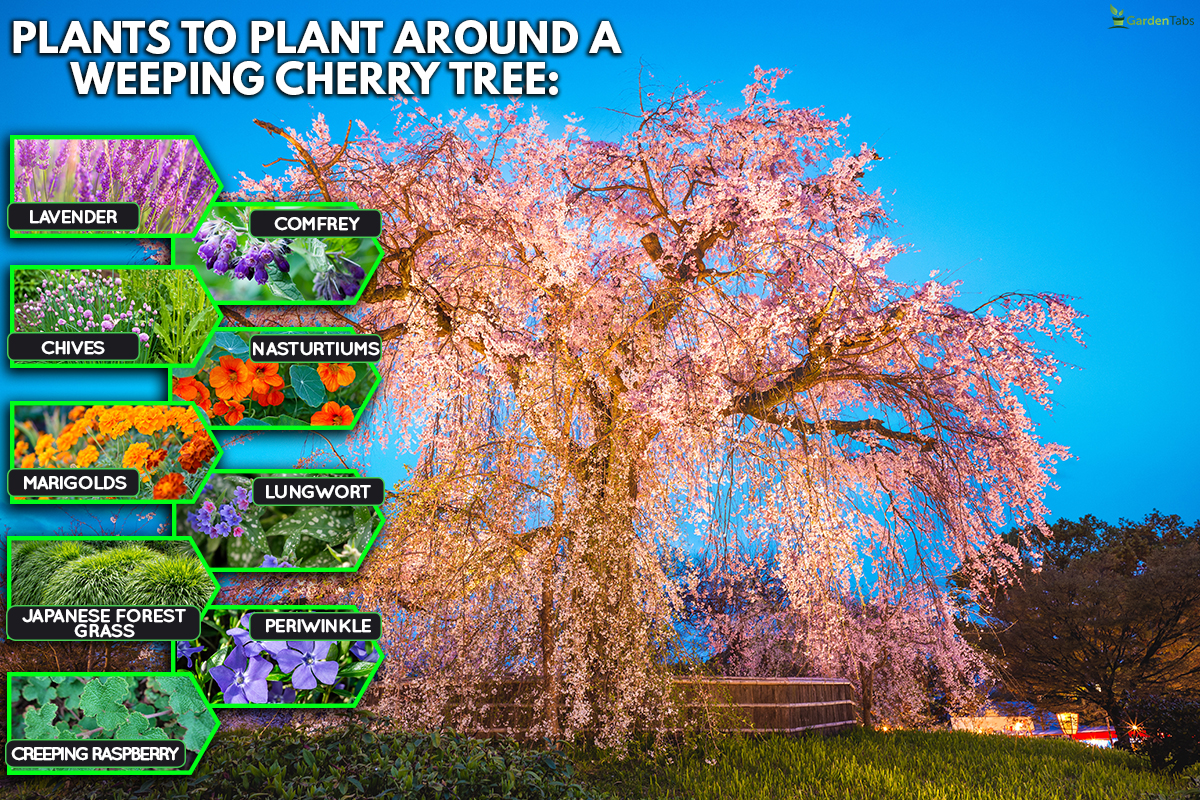
What To Plant Around A Weeping Cherry Tree?
Lavender
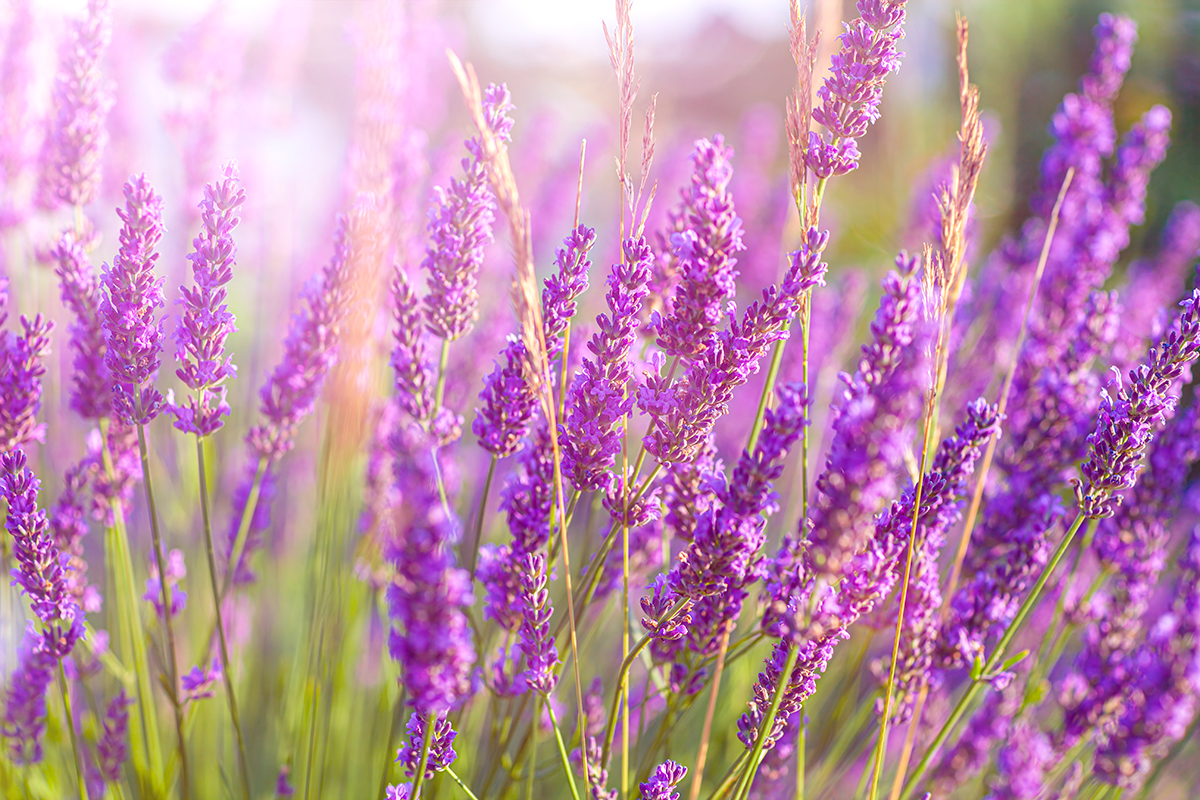
With its fragrant, beautiful spikes of purple blooms, lavender is a tough perennial that would look great under your weeping cherry tree.
Since it has a tough, oily texture, pests like deer and rabbits don't find lavender attractive, which will help keep them away from your cherry tree. However, it's very attractive to bees and other pollinators.
From a design standpoint, lavender is also a good choice. By the time your weeping cherry tree loses its blossoms in late spring or early summer, your lavender will just be coming into bloom.
This ensures beautiful colors in this part of your garden all spring and summer long. Like weeping cherry trees, lavender prefers well-drained, slightly alkaline soil.
However, since it needs partial to full sun, consider planting it on the southern side of your cherry tree.
You can learn more about caring for different lavender varieties in our article "How Long Do Lavender Plants Last?"
Russian Comfrey
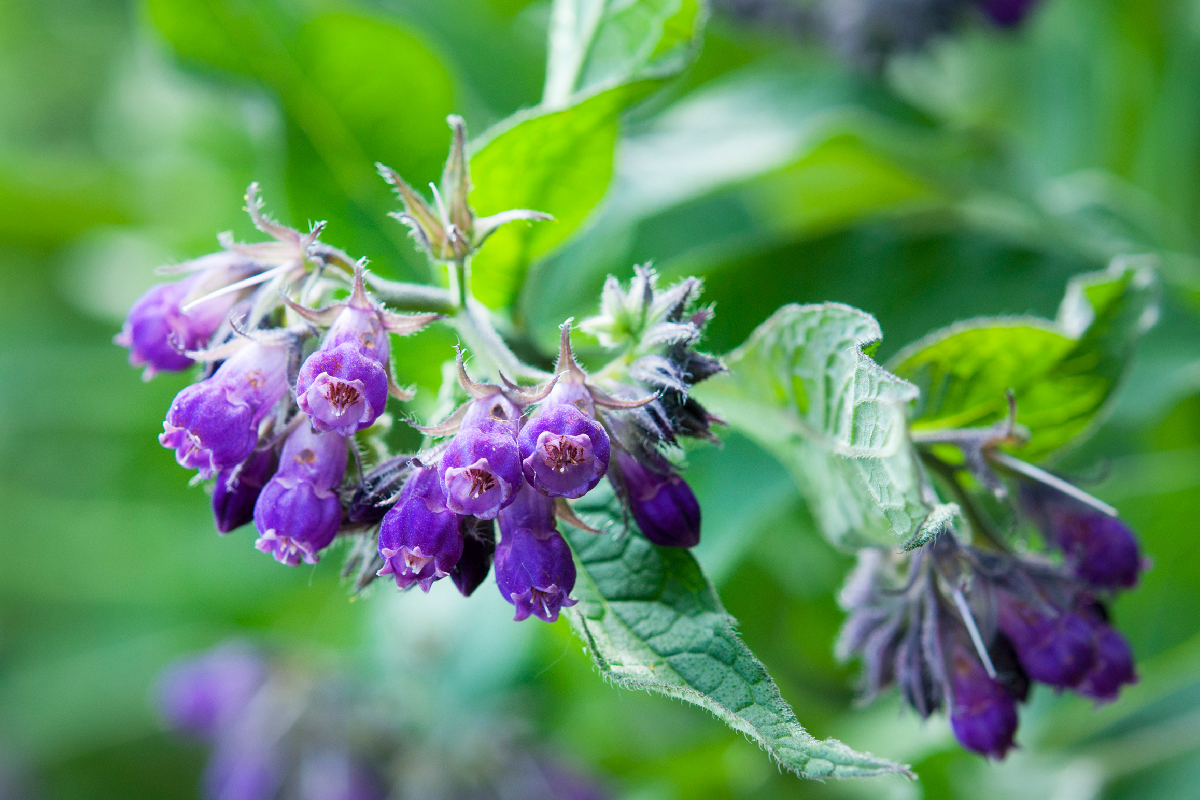
Russian comfrey has large, bright green leaves and bell-shaped, blueish-purple flowers that attract pollinators. Since it's a hybrid between common and prickly comfrey, it's sterile and won't spread unless you nick or cut the root.
That means it will stay contained right underneath your cherry tree. Slugs and other bugs also enjoy hiding in their leaves, so they'll leave the rest of your garden alone.
However, one of the best features of Russian comfrey is its long taproot. The laterally-spreading parts of the root help break up the soil and carry nutrients toward the surface.
This makes it an ideal companion for weeping cherry trees since they enjoy well-aerated soil. Plus, Russian comfrey grows well in full sun to partial shade so that you can plant it almost anywhere underneath your tree.
Chives

Part of the garlic family, chives are equal parts attractive plant and delicious cooking companion. Long, tubular green stalks are topped with purple flowers, and all parts of the chive are edible.
They also make a great companion for weeping cherry trees, as they thrive in slightly acidic, well-drained soil. Most importantly, their anti-fungal qualities are a boon to fungus-prone cherry trees.
Chives prefer full sun to partial shade, so you can plant them in almost any area beneath your weeping cherry tree. If your tree is near your vegetable garden or back door, chives are a particularly nice choice.
That makes it easy to pop outside before dinner and snip off some chives to add to a salad or side dish!
Nasturtiums
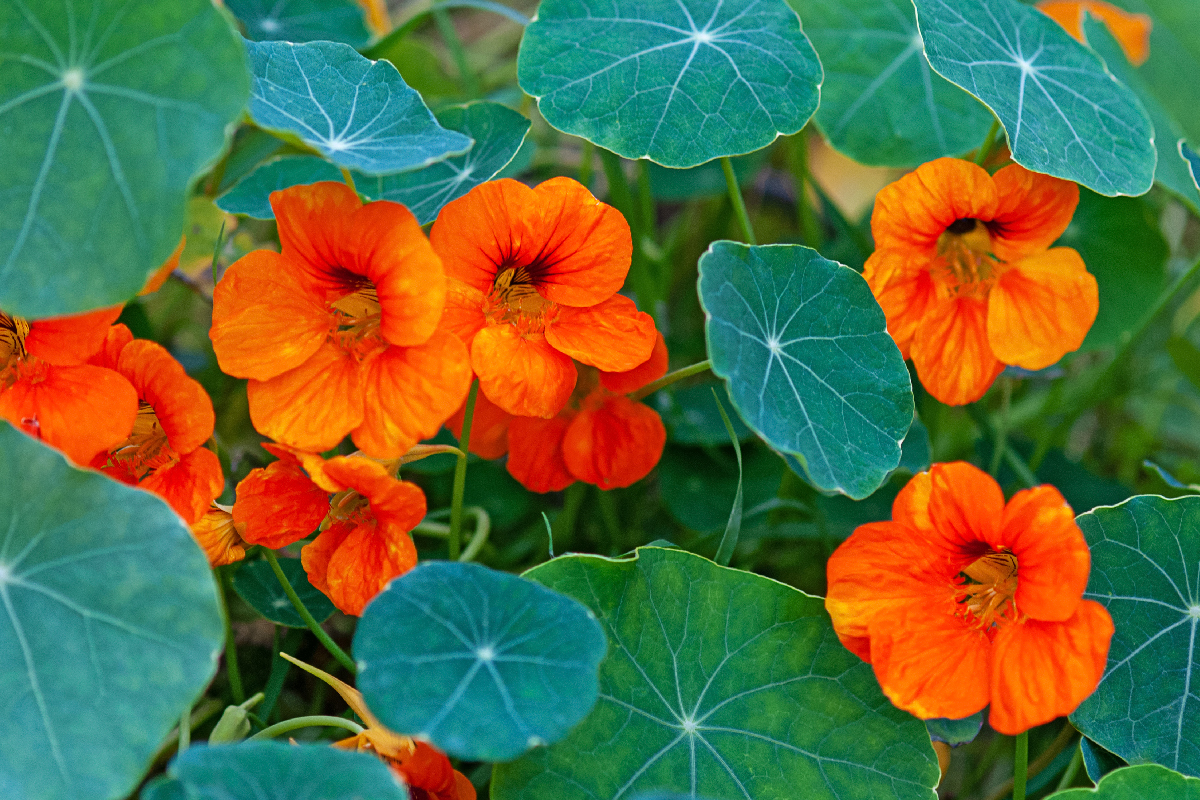
Another edible companion, nasturtiums, has five-petal flowers in shades of red, orange, and yellow. Their round leaves and delicate stems make them attractive even when not actively blooming.
Plus, nasturtiums make a great companion for any plant because they attract aphids away from nearby plants and are themselves impervious to these tiny pests.
Nasturtiums are incredibly easy to grow and can thrive without much water or fertilizer. They prefer well-drained soil and need it to be slightly acidic to produce flowers.
Luckily, that matches perfectly with the requirements of weeping cherry trees. Additionally, they can grow in full sun to partial shade, so you don't need to worry about confining them to the southern side of your tree.
Marigolds
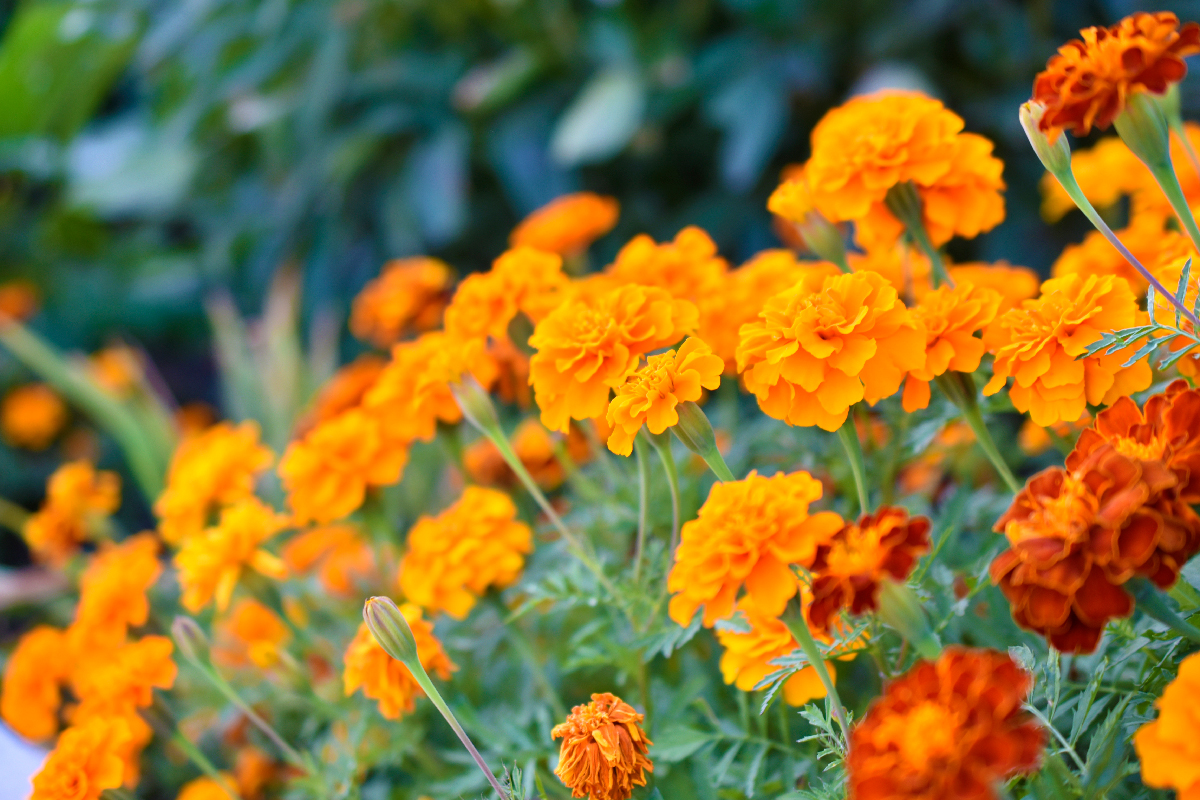
With their cheerful orange flowers, marigolds are often grown as a companion to vegetable gardens because they effectively drive away pests from nematodes to rabbits.
Although they're most often grown with vegetables, this quality makes them a great companion for weeping cherry trees.
The French marigold is the most effective variety in driving out nematodes, but other members of the Tagetes genus are also useful.
You can read more about this topic in our article "Are Marigolds Good For Your Vegetable Garden?"
Marigolds prefer slightly acidic soil, which makes them a good pair with weeping cherry trees. Like cherry trees, they also like well-drained soil and don't need much water to thrive.
The only area where you may encounter problems is marigolds' light requirements. They prefer lots of sun and are at risk of developing mold when grown in damp, dimly-lit conditions.
Because of this, you should try planting them on the southern side of your tree or if your tree has a sparse canopy that lets in plenty of light.
Lungwort
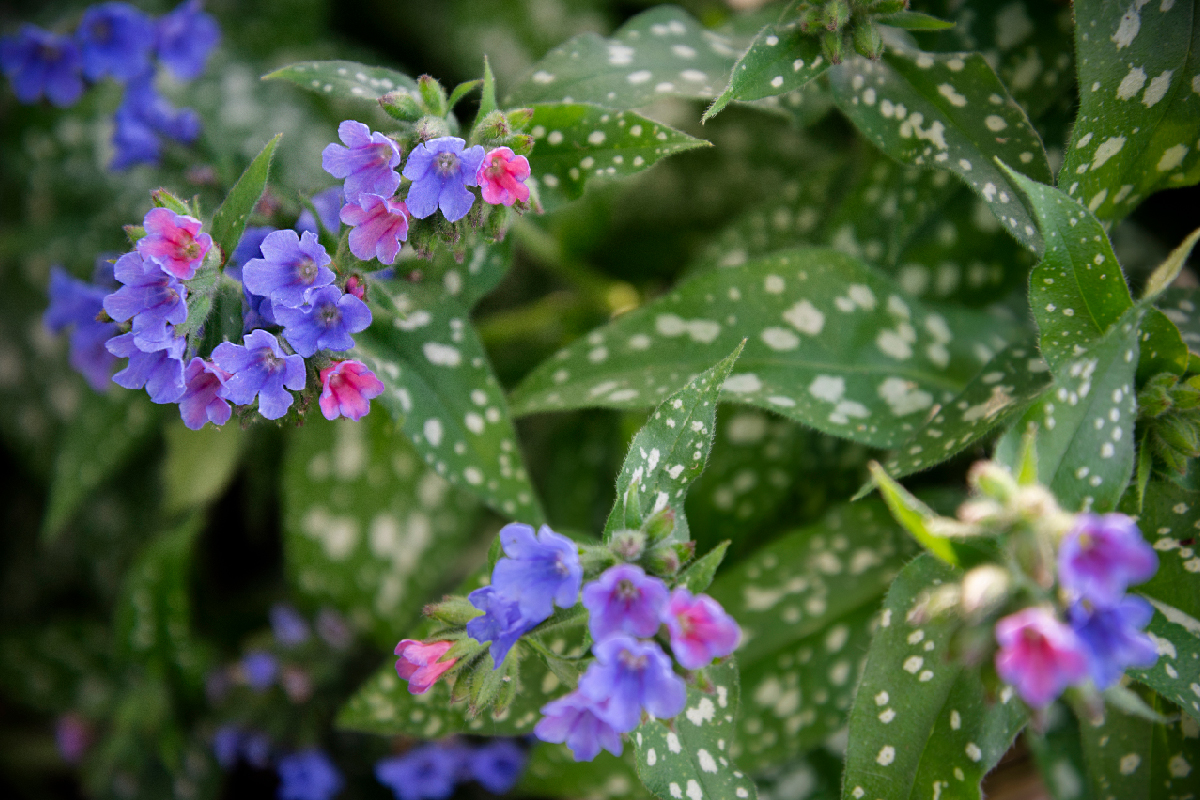
If you'd like the gorgeous pink blossoms of your weeping cherry tree to remain center stage, consider planting a foliage-heavy plant like lungwort. Lungwort has large, lung-shaped green leaves speckled with small white spots.
Although it also has tiny flowers in shades of purple, blue, and pink, they take a backseat compared to the leaves. This provides a lovely backdrop for your cherry tree's sweeping pink boughs.
Lungwort thrives in damp, shady conditions, so you can feel free to plant it deep underneath your weeping cherry tree. Plus, it can grow in soil with any pH level. All of this makes it one of the easiest-to-grow plants on this list.
Japanese Forest Grass
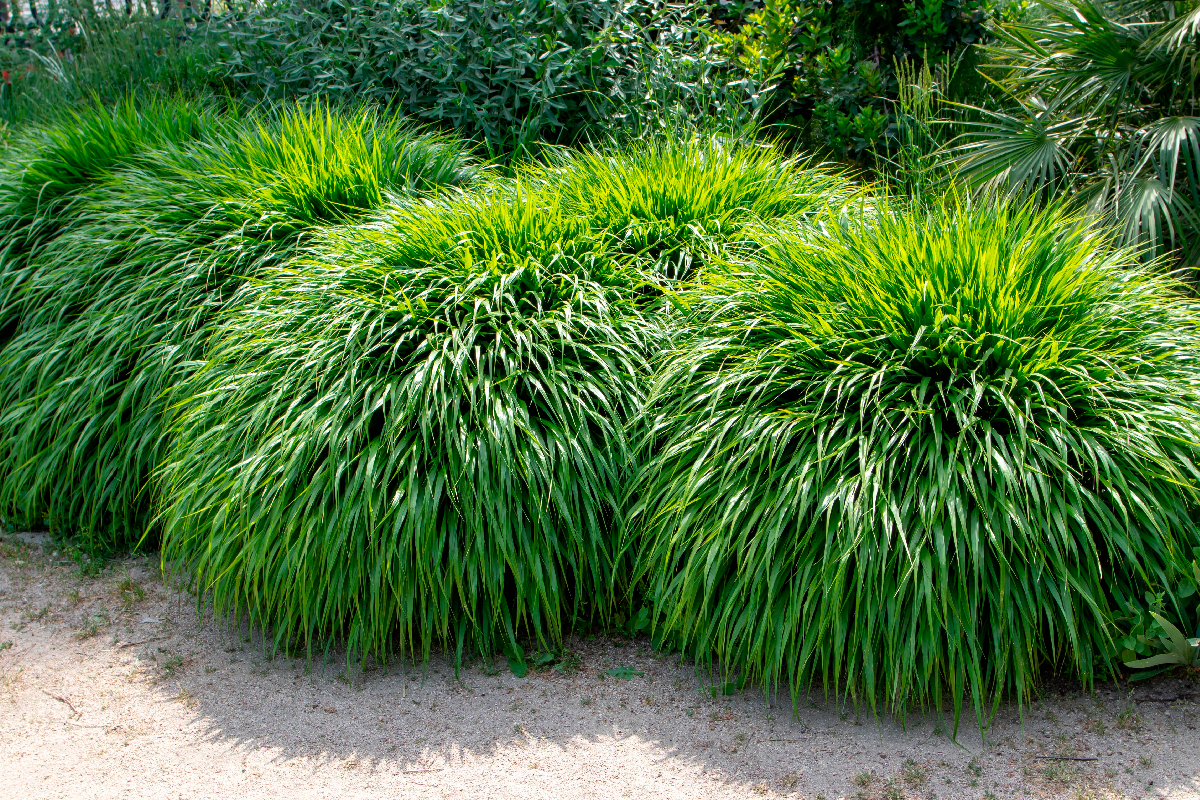
Japanese forest grass is another outstanding choice if you want a solid green backdrop for your weeping cherry tree. The long, arching blades of Japanese forest grass form small, rounded clumps.
Since it needs full to partial shade to thrive, it can also be planted close to the trunk of your tree. In fact, the leaves of Japanese forest grass become even brighter green when they grow in shady conditions.
Japanese forest grass is incredibly resistant to disease and pests, and deer seem to dislike it intensely. Plus, like weeping cherry trees, it prefers well-drained soil and can thrive in any pH level. Since it needs moist conditions to grow well, consider adding mulch around the roots.
Periwinkle
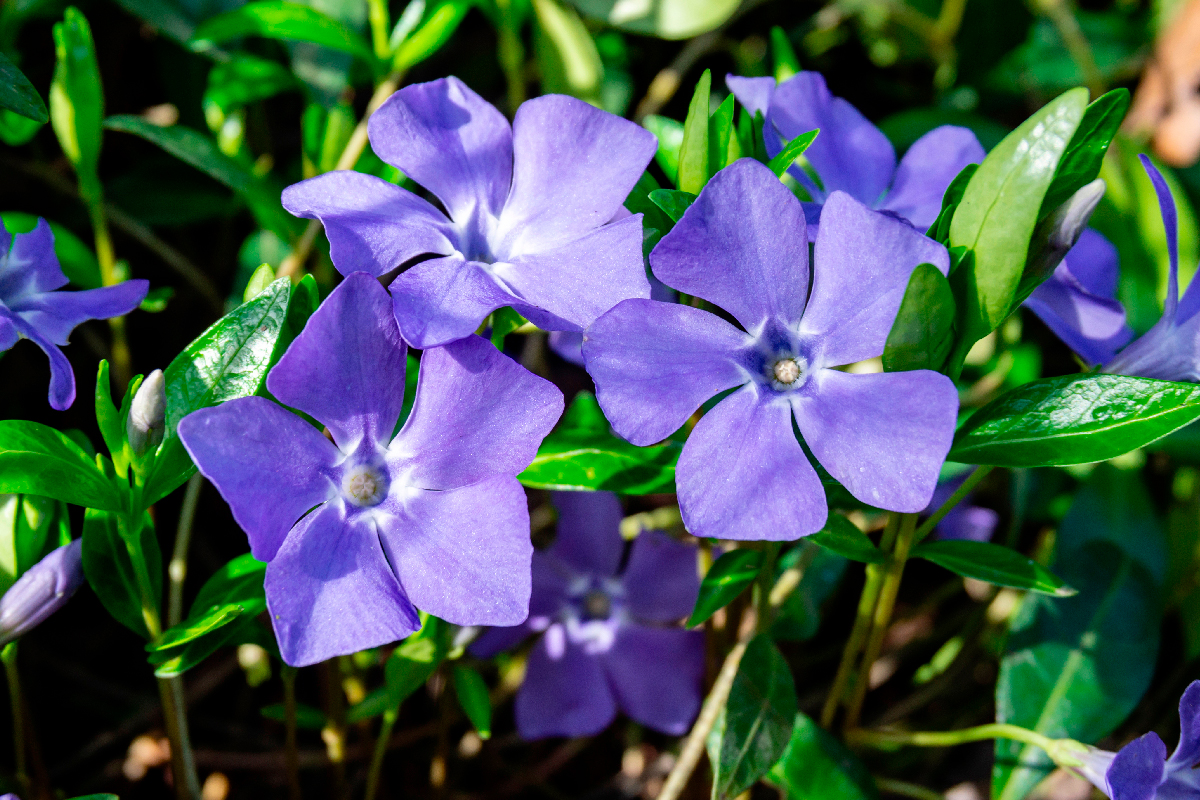
With its shiny, dark green leaves and dainty periwinkle-blue flowers, periwinkle is an excellent ground cover to plant underneath your weeping cherry tree.
As it's evergreen in most climates, it also provides a pop of color even after your cherry tree has lost its leaves. Periwinkle also thrives in any level of sun, from full sunlight to full shade. This means it does well planted on any side of your cherry tree.
Many varieties of periwinkle attract pollinators. It's also pest-resistant and requires very little maintenance. Although it thrives in almost any condition, its favorite is slightly acidic, well-drained soil.
Since that's exactly what weeping cherry trees like, too, periwinkle makes the perfect companion plant.
Creeping Raspberry

Creeping raspberry is another great choice if you're looking for an evergreen ground cover. It has richly textured, bright green leaves that, depending on the climate, turn red in the fall.
Small white flowers bloom in spring and summer, and golden berries appear later in the season. Since it prefers well-drained soil of any pH level, creeping raspberry is a perfect companion for weeping cherry trees.
Another quality that makes creeping raspberry a good pair for weeping cherry trees is that it thrives in full sun to partial shade.
Because of this, you don't have to worry about it dying if it happens to spread all the way around your cherry tree. It also repels deer and almost all insect pests.
In Closing
If you're looking for a plant to grow underneath your weeping cherry tree, you have many choices. These include flowers, grasses, and evergreen ground covers such as:
- Lavender
- Marigolds
- Comfrey
- Chives
- Nasturtiums
- Lungwort
- Japanese forest grass
- Periwinkle
- Creeping raspberry
We hope this article was helpful and that you feel even more confident as you choose the perfect companion plant for your weeping cherry tree!
